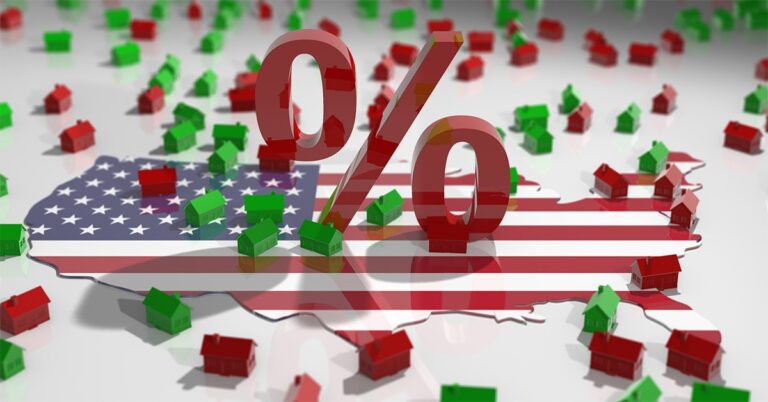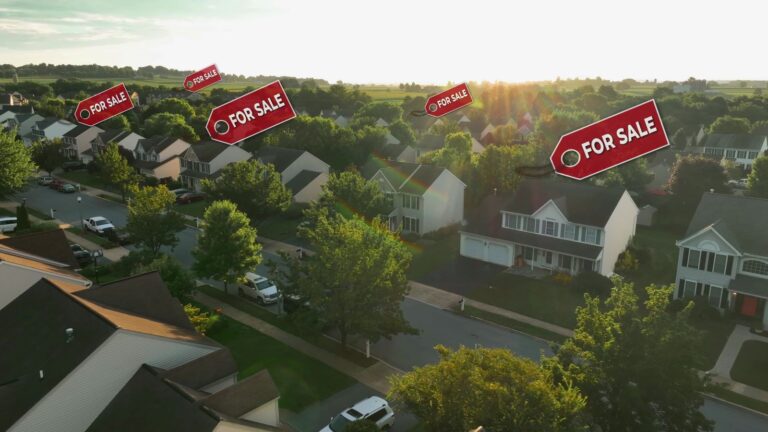As National Homeownership Month comes to an end in June, everyone in the housing and mortgage industries should think about a collective press to legislators in Washington, D.C., to make affordable homeownership a top priority.
The 2024 presidential election is in its infant stages, but once again, neither major party seems to be elevating homeownership as a top-tier issue. This is troubling. While the U.S. doesn’t have a full-scale housing hurricane like it did in 2008, there is a silent storm brewing.
The policies of the Federal Reserve over the past few years are a key contributor to these conditions. The Fed kept benchmark interest rates low, leading to a run-up in home prices, then quickly shifted in the other direction and threw a beachful of sand into the gears of the home purchase market. But today, as the supply of homes outpaces demand, prices have only softened slightly even in the face of a doubling of mortgage rates. The result is brewing storm of high home prices and high mortgage rates.
A newly released annual study from the Joint Center for Housing Studies of Harvard University explains these underlying dynamics. It concluded that higher home prices are forcing first-time buyers to save even more for downpayment costs and upfront fees to secure a mortgage, and borrowers require ever-higher incomes to afford the monthly payments.
Industry leaders and lawmakers need to confront head on the reality that an entire generation of young families faces unprecedented barriers in being able to buy a home — even at a time when wages are surprisingly robust. There is talk about a wealth gap based on basic job-related income disparities. But a generational wealth gap has also been created by the run-up in home prices.
Older Americans are flush with equity in their homes due to the price boom over the past 15 years. But younger Americans are increasingly locked out of homeownership and the resulting wealth it creates, consigning them to ever-increasing rent payments.
Take, for example, areas such as Northern Virginia and Southern California. Million-dollar homes are the rule, not the exception, in these regions, and rates for 30-year fixed loans frequently exceed 7%. Younger residents wonder how they’ll be able to afford a home under these circumstances and their parents usually don’t have a good answer.
So, what should be done? Congress has launched some constructive proposals, such as the HELPER Act (a program that offers zero downpayment loans to police officers, firefighters and other first responders) and the Neighborhood Homes Investment Act (which creates tax credits to rehabilitate single-family homes in underserved communities).
Earlier this year, the Federal Housing Administration (FHA) cut mortgage insurance premiums by 30 basis points, which will benefit an estimated 850,000 borrowers in the coming year by saving them an average of $800 annually. The Federal Housing Finance Agency rescinded loan-level pricing adjustments on Fannie Mae and Freddie Mac loans that were based on the borrower’s debt-to-income ratio. These measures are consistent with the Biden administration’s objective of closing the homeownership gap for minorities and other underserved borrowers.
But some would argue that, in the face of competing priorities, the White House is not showing sufficient energy and commitment to making homeownership the top policy priority it deserves to be. Others argue the same is true of the major Republican candidates for president.
Meanwhile, some federal and state regulators don’t seem to understand the critical role that independent mortgage banks (IMBs) play in access to mortgage credit, particularly for underserved borrowers. With the failures of Silicon Valley Bank and Signature Bank, regulators are understandably focused on shoring up regional banks. That is important for the economy and activities such as small-business lending.
Clearly, however, this will do virtually nothing to help create more homeownership opportunities. When it comes to mortgage lending, banks have pulled back considerably since the 2008 housing crisis.
Back then, banks responded by imposing credit overlays to limit mortgages to well-heeled borrowers, obstacles that are still in play. IMBs have sought to pick up the slack. As the Community Home Lenders of America highlighted in a 2022 report, IMBs now originate two-thirds of all mortgages, as well as 90% of all FHA and U.S. Department of Veterans Affairs loans. IMBs demonstrably outperform banks in lending to minority, low-income and underserved borrowers, as reports by the Urban Institute and the Greenlining Institute show.
But instead of embracing and strengthening IMB efforts, bank executives and think tanks continue to fall back on an old canard that “IMBs are risky” and need to be reined in. Lawmakers should not listen to such baseless rumors. Instead, they should take action to boost IMB efforts that will increase access to mortgage credit.
For example, since IMB servicers are essentially bankers for borrowers who miss mortgage payments, liquidity support systems that are routinely provided to banks should also be made available to IMBs. These include an enhanced Pass-Through Assistance Program (PTAP) from Ginnie Mae and advances from the Federal Home Loan Banks.
To boost homeownership for underserved families and communities, instead of extending Community Reinvestment Act bank requirements to nonbanks, a plan has been laid out to address the cost barriers for loan originator licensing requirements at IMBs, which are much stricter than for banks. This is a much more impactful way to help IMBs to do a better job of lending to borrowers and communities in need — by creating thousands of new independent loan originators.
Beyond these changes, bolder actions are needed, starting with the Federal Reserve swinging the pendulum back toward lower interest rates. The mortgage industry also needs to think about and act big when it comes to programs targeted at younger families, including significant downpayment assistance for first-time homebuyers.
Six years ago, Congress ended the mortgage tax deduction for the nation’s most affordable homes. Lawmakers should consider a new provision for first-time buyers, such as a downpayment tax credit, an above-the-line mortgage deduction or a downpayment grant program. And more emphasis on financial literacy is needed in schools. This will prepare the next generation to save and buy a home they can afford.
Ultimately, leadership matters. Any candidate running for president should pledge to make affordable homeownership a top priority — and back that pledge with concrete proposals. In swing states across the country, this will serve as good politics. And there is still time to make the next election different.
Author
-

Scott Olson is executive director of the Community Home Lenders of America (CHLA). CHLA is the only national association exclusively representing independent mortgage bankers and is comprised of small and midsized community-oriented mortgage lenders and servicers.
View all posts






